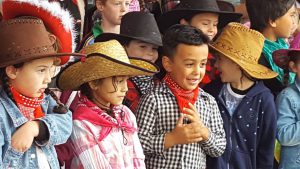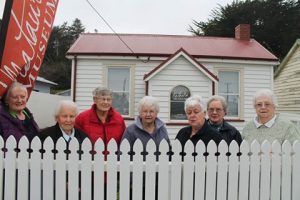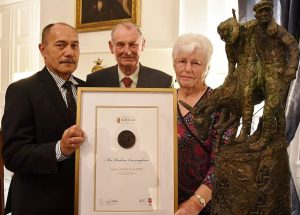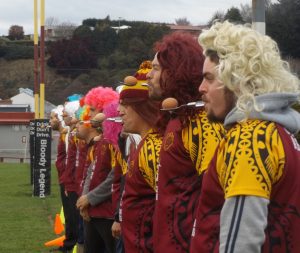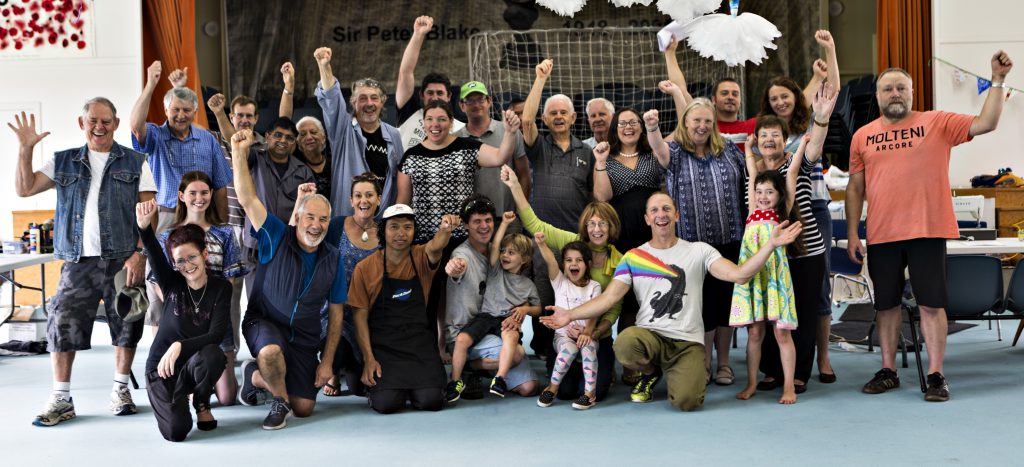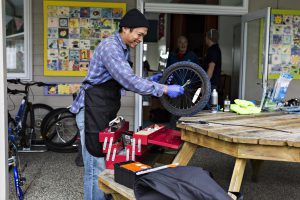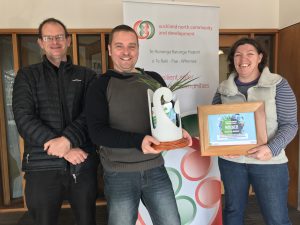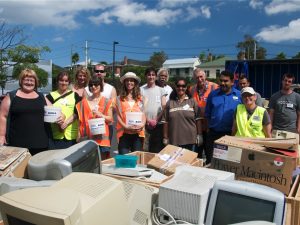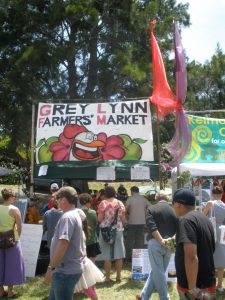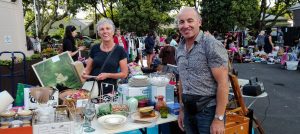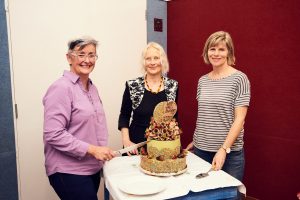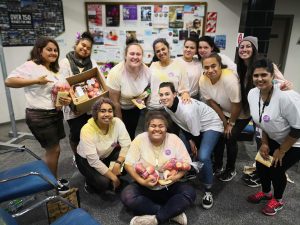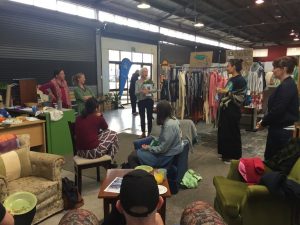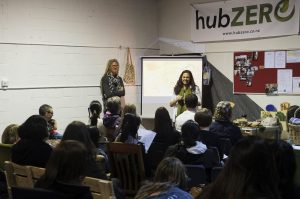Building Wellbeing The Manawa Way
Community-led development approaches take many different shapes and forms.
When we think of group fitness classes, some words that come to mind might be: cardio, strength, schedule and training. But when we spoke to Carnation Hetaraka of Manawa Community Wellness – a project that started out as community group fitness classes – the words we heard included connection, heart, sustainability, inclusion, culture. Needless to say, we were intrigued to find out more.
“Usually inside a gym setting you’re in for an hour, then you’re out the door. But we wanted to retain a connection.”
Manawa – meaning heart – was an important word included in the name given to the project by a group of mothers who had a shared vision.
“Originally it did start off as Manawa Community Fitness. But we realised that people were there for more than a programme. They were staying at the end. Talking… sharing. Manawa is community. Manawa is people.”
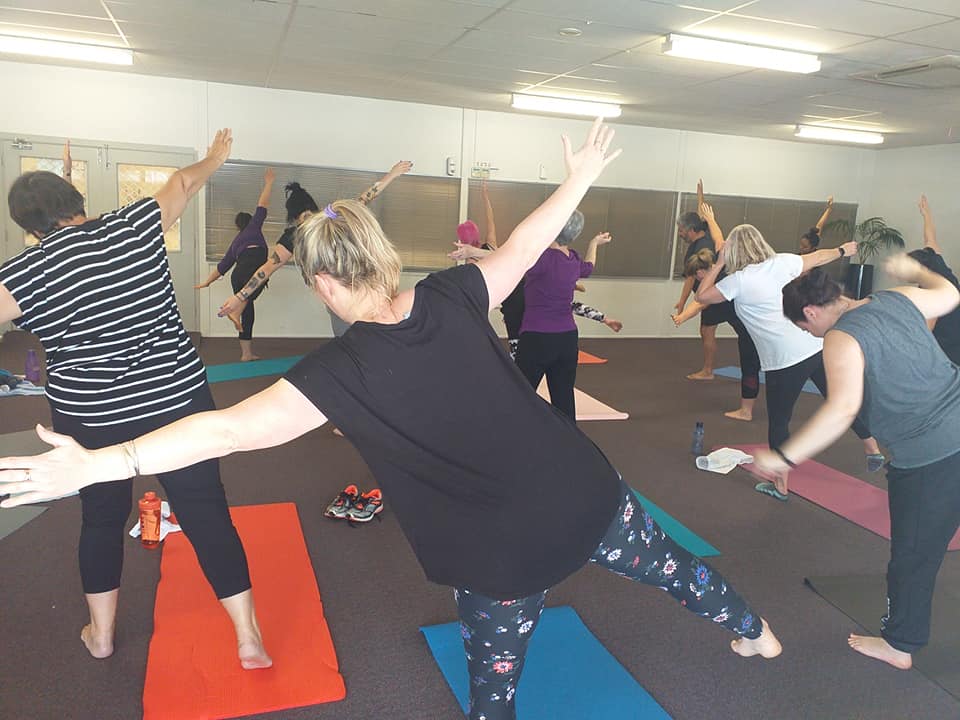
SHARED LOCAL VISION
Hetaraka and her five colleagues realised that people were taking much more than just exercise from the classes, and willingly embraced the idea of growing the movement as a community rather than a series of weekly classes.
“For us it’s about connection. To each other and to our culture. Most of the people who come along identify as Māori and they have kids… so we manage that by keeping them entertained. It makes it easier for people to come along if they can bring their kids.”
Evolving naturally at first into group hang outs following classes, it was the memories of childhood games, activities and a connection to their shared Māori culture which saw the Manawa leadership grow their vision.
“We wanted to find other ways of embracing our culture. It’s grown from everyone staying for morning after class to incorporating Māori rhythm and music into our fitness and wellbeing classes.”
Along with the inclusion of Te Reo Māori, an acknowledgement of everyone’s individual iwi and whakapapa, and a commitment to respond to the needs of their wider community, Manawa Community Wellbeing is an initiative that delivers exactly what they set out to.
BUILD FROM STRENGTHS
Heteraka wasn’t always a keen gym-goer. But after living through some hardships in her life she found reprieve in going to the gym.
“A friend of mine actually dragged me along. It wasn’t ever my thing. But after a while I got into a routine, and I ended up training as a rookie instructor.”
Together with some fellow mums who had similar goals to enrich their whanau, Manawa Community Wellbeing took shape in early 2018, and the group worked to their strengths to develop programmes that each of them felt passionate about delivering. They now have, on average, 30 people attending each class regularly.
“Gyms don’t want just anyone, they want people who are heavily into fitness. But that’s not us. Our mantra is ‘purposeful movement for everybody’”.
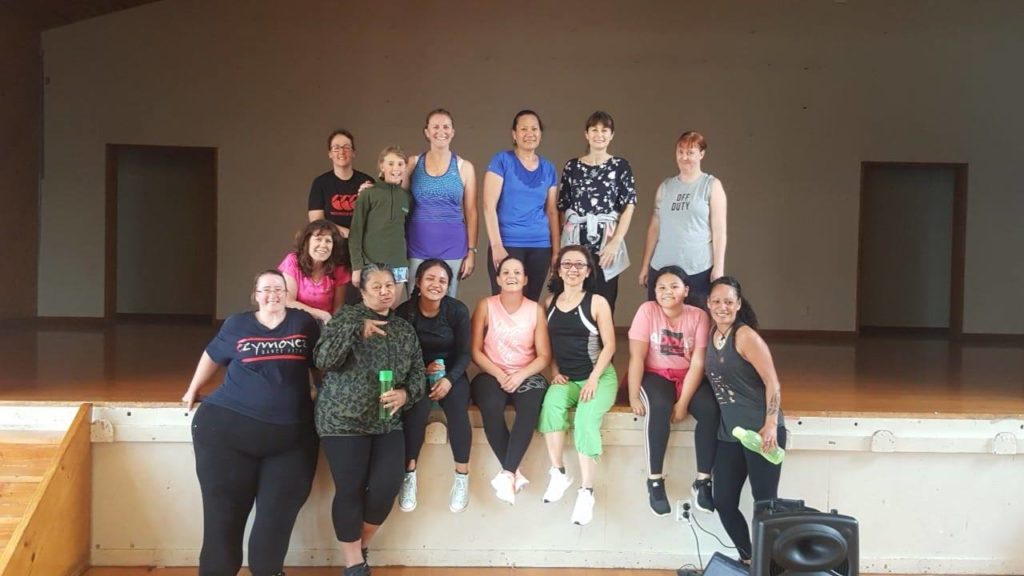
WORK WITH DIVERSE PEOPLE AND SECTORS
As all community-led development projects tend to experience, this initiative too had its challenges. The team were tasked with finding an appropriate space that was fit for purpose, suited the budget, made it easy enough for people to get to, and meant they have room to adapt their programmes to suit requirements.
“We definitely had fears about how we were going to find a space and make this happen. We had to research venues, review conversations, look at council bookings, find a space that felt right… all of those things. Between us we’re all really creative. We’re innovative and intuitive, and we had nothing to lose. We just wanted to get out there and make it happen.”
The first place the group hired to run their programmes presented a few challenges straight away.
“We had to book so far in advance, but we were so new. We ended up spending more time checking in with people and figuring out parking headaches. It was preventing people from bringing their children… but we promote connection. We wanted to make that possible.”
Now offering four classes, and operating across three locations in West Auckland, Manawa Community Wellbeing caters mainly to parents and caregivers – and sometimes whole whānau, since parents are welcome – who are able to bring their tamariki to classes.
The response has been overwhelmingly positive, with regular attendees saying the classes have made them feel connected to their physical and emotional wellbeing, successful, mentally refreshed, and healthy. That in itself, Coronation says, is enough inspiration to keep doing what they’re doing.
GROW COLLABORATIVE LEADERSHIP
Between the six core Manawa team members they have found that they naturally work well with each other’s strengths.
“You can’t have six people working on one thing, and we all get that. I usually do the innovation and creation, and we all share the load in a way. When we’re out networking and sharing there’s the same story and there’s clarity.”
The team uses free digital mediums to stay connected between classes, because often when they do see each other it’s not a good time to talk work things.
“We stay in touch and we see each other three times a week with classes. But when we need to chat we all make time and come together. Usually that’s a scheduled thing but we are all flexible because life just is like that sometimes, and supporting each other so that we can support our community is the most important thing.”
Heretaka explains that the wonderful thing about having a shared vision is that when they do come together, it’s still about connection first and foremost, which provides further opportunities for socialising and getting those all-important photos to share across social media.
“Ultimately this entire project is about having healthy whanau. We want them to live longer, happier lives. We all have different backgrounds, we all work full time, but that doesn’t stop us.”
The learnings of the evolution of this project have been many, but no challenge has been too great for Heretaka and her team.
“The first thing we did was to believe in what we were doing, even if the world thought we were crazy. It’s about keeping people at the centre, and keeping the love. If you’re on the right path, the rest will follow.”
To connect with Manawa Community Wellbeing, visit their Facebook page here: https://www.facebook.com/manawacommunityfitness/
Walkways and Whitebait: Good things in Greymouth
It’s been seven years since a public meeting held by Grey District Council introduced two ideas: to enhance the local estuary, and to develop the adjacent lagoon into a welcoming park and recreation area.
The project that was seeded that night responded to the agreed task at hand: to come up with ideas to encourage more visitors to stick around in Greymouth, and as well as the buy-in from community members at the meeting, the project won backing from both the council and the Department of Conservation (DOC).
Part one – enhancing the local estuary – meant creating and planting more channels in the estuary to create a thriving whitebait habitat. Arguably the animate hero of the West Coast, this idea was heartily welcomed by locals and by DOC workers who have a vested interest in the preservation and regeneration of the whitebait population.
Work began on this part of the project in 2013, and by 2018 six kilometres of new channels had been dug in the estuary, and between ten and twelve thousand plants had been put in the ground.
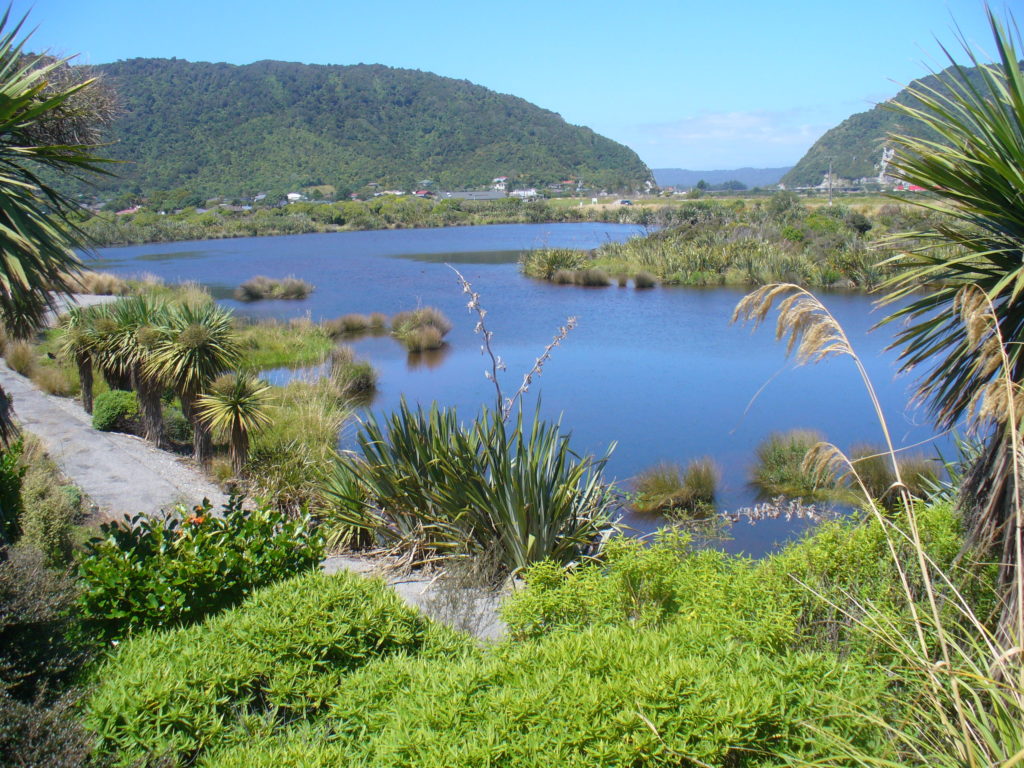
Rob Harrison, local volunteer and career land manager says, “now it’s a matter of keeping back the weeds to allow the native plants to colonise the estuary and watch the whitebait population grow.”
GROW COLLABORATIVE LOCAL LEADERSHIP
(click here to see IC resources on Grow Collaborative Local Leadership)
Rob joined forces with fellow volunteers to establish CASRA (Cobden Aramohana Sanctuary and Recreational Area) society after the council coordinator’s funding was stopped.
“When the funding dried up, we decided to make a little incorporated society CASRA, to facilitate the project and so that we could have the ability to apply for funding. It’s worked well because DOC and the council was impressed with our efforts.”
“We became the liaison agency to connect the Grey District Council and DOC. There was a plan which had been drawn up and it was essentially our job to see it through.”
CASRA is a mix of passionate locals who have a wide range of skills from landscaping to whitebaiting, and just generally want to lend a hand on the project.
BUILD FROM STRENGTHS
(click here to see IC resources on Build From Strengths)
“We were lucky at that first meeting. We had people in the room whose skills really suited this project. Connections to DOC, experience in land management, landscaping and eco-systems… it became a situation of building on the skills we had in our group.”
Part two – redeveloping the beautiful Cobden Lagoon, a stone’s throw from the estuary – was commenced in 2014.
“The council had begun planting the lagoon around ten years ago after a rubbish dump, on the ocean side of the lagoon, was closed in 2008. We then became involved focusing on planting and developing a path around the lagoon.”
SHARED LOCAL VISION
(click here to see IC resources on Shared Local Vision)
Although CASRA has just ten regularly active volunteers, there was great interest from locals to lend a hand, and by working closely with the council and DOC, extra labour was brought in from Conservation Volunteers NZ.
The numbers go some way to demonstrate the scale of this project:
- $21,000 spent on plants and contract planters
- 600 hours of volunteer work
- 4,000 trees, hebes and flaxes planted with plans to plant more in the coming years
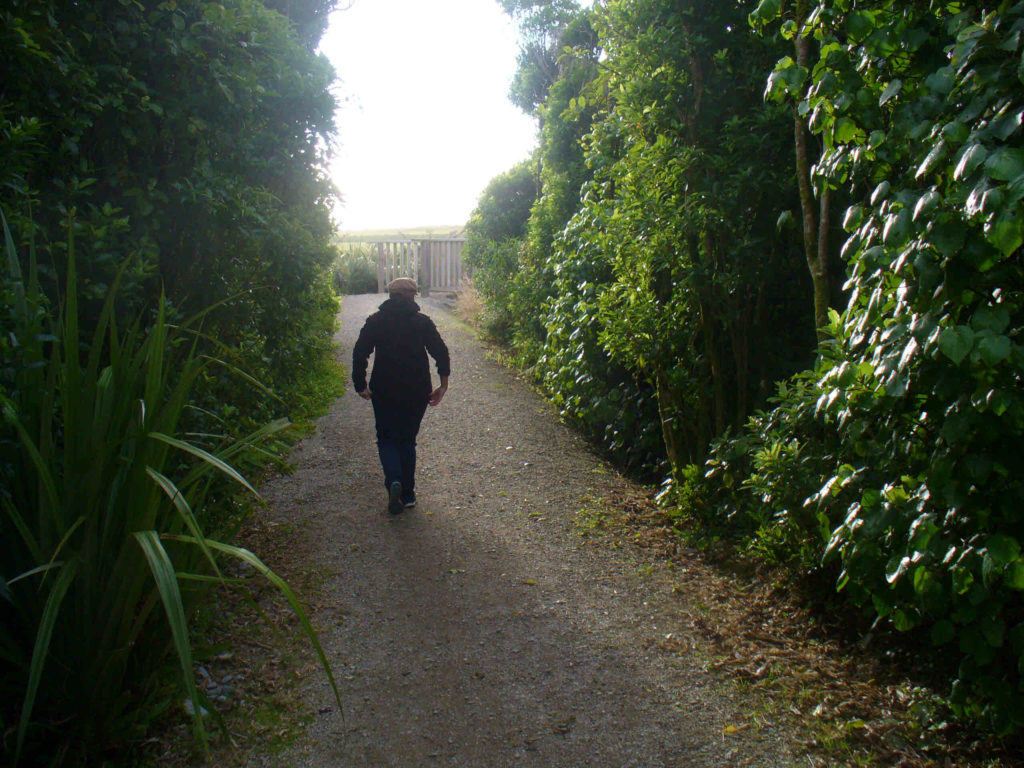
“The maintenance side of things kicks in now. Weed clearing, path making and predator trapping to name a few. The introduction of plants has naturally evolved this lagoon into a bird sanctuary and overall it’s a beautiful looking place.”
Harrison and his wife live very near the project site so it became a personal investment to see their own place be developed for future generations.
“We won’t be around to see the trees grow too tall of course, but it’s really turned into a lovely place to go for walks and see the wildlife.”
LEARN BY DOING
(click here to see IC resources on Learn by Doing)
“To say this project was carried out without hiccups wouldn’t be accurate! What’s a project if it doesn’t face delays and speed bumps, after all. But I think you have to make allowances for that and be prepared to work with what you’ve got, Especially within a small community as we have. I have definitely felt a bit frustrated sometimes…. If you want to make progress you’ve got to focus on the positives.”
On a personal level, Harrison’s involvement in CASRA and this particular project has meant he’s felt a sense of being able to give back to his community by sharing his skills and knowledge, as well as offering some of his free time now that he’s retired.
To see the significant rise in the number of people who stop to enjoy the surroundings has been reassuring for everyone involved.
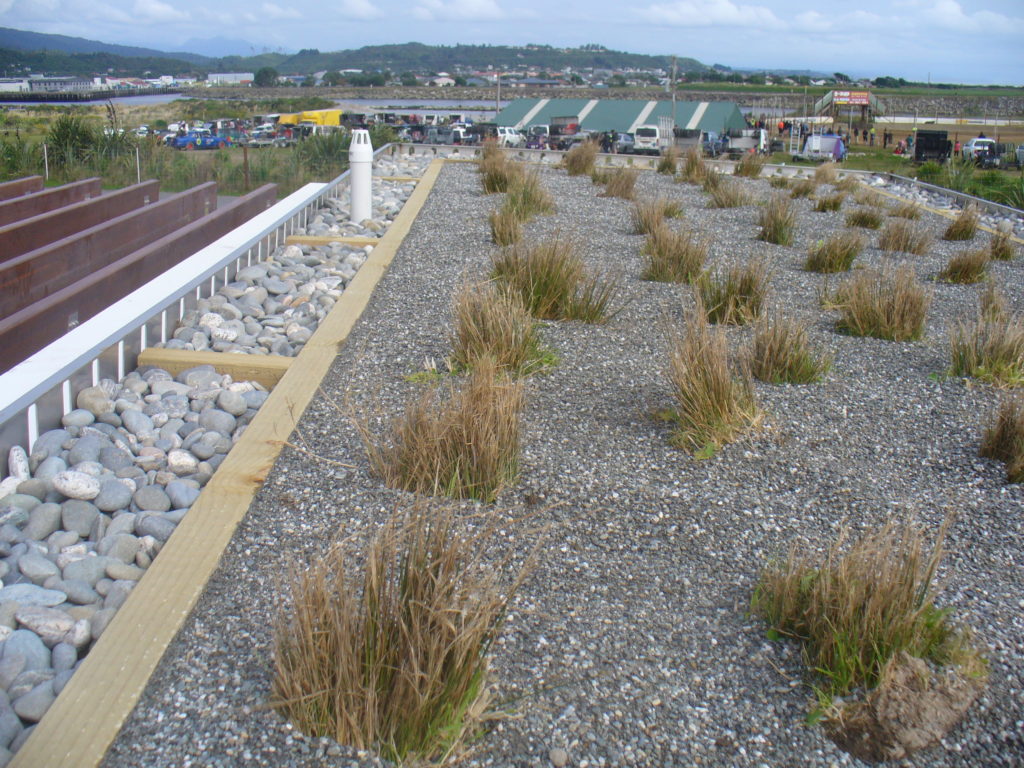
“The combination of walks, water, native plants, birds and whitebait is drawing in the visitors, and that was our original goal. It might have taken a while to get here, but it goes to show that if you can retain a sense of humour and some patience, you’ll get there. It’s worth it in the end.”
Cobden Lagoon is located off the main state highway through Greymouth and is well worth a stop. More information about this project and its whereabouts can be found here.
For resources collated by Inspiring Communities that relate to the processes and principles identified in this story, we encourage you to visit our website.
Te mauri o Uawa – The essence of Tolaga Bay
It’s only 45km north of Gisborne, but Uawa – or Tolaga Bay as it’s more commonly known – is a community which is fiercely proud of its identity. The community-led development mahi that is done in this place is underpinned by a commitment to honour its history and to serve its future generations.
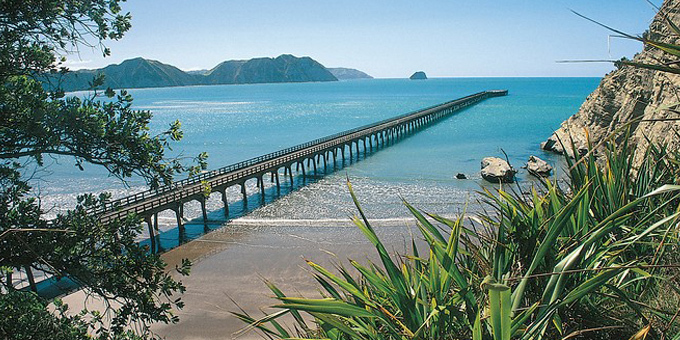
“There’s an oral history of our place. Te Ahikā ki Ōpoutama. It’s a way for our whanau who aren’t here to engage with us. Because this is what makes us feel connected to our land.”
Shanan Gray of Te Aitanga a Hauti Centre of Excellence, formed in 2017, says that understanding Uawa’s rich history is at the heart of the Trust’s purpose. It drives all of what their community does, has led to relationships with Mahina Village in Tahiti – the village of the Tahitian navigator who landed with Captain Cook on the Endeavour in Tolaga Bay in 1769, and has offered a deeper understanding of Uawa’s whakapapa.
It’s also what is behind the Trust’s intention of helping every person in Uawa reach their full potential; by focusing on their peoples’ connection to their pepeha.
“Without a connection to your pepeha, you can’t know yourself. And if someone doesn’t know themselves, how can a person thrive?”
It has been this commitment to their sense of belonging that has led Uawa to consciously carry out their CLD work in a way that resembles the values of their seven marae: they all have their responsibilities, they know they need to work collaboratively together, and they ensure that each and every one of their wider whanau drives their plans.
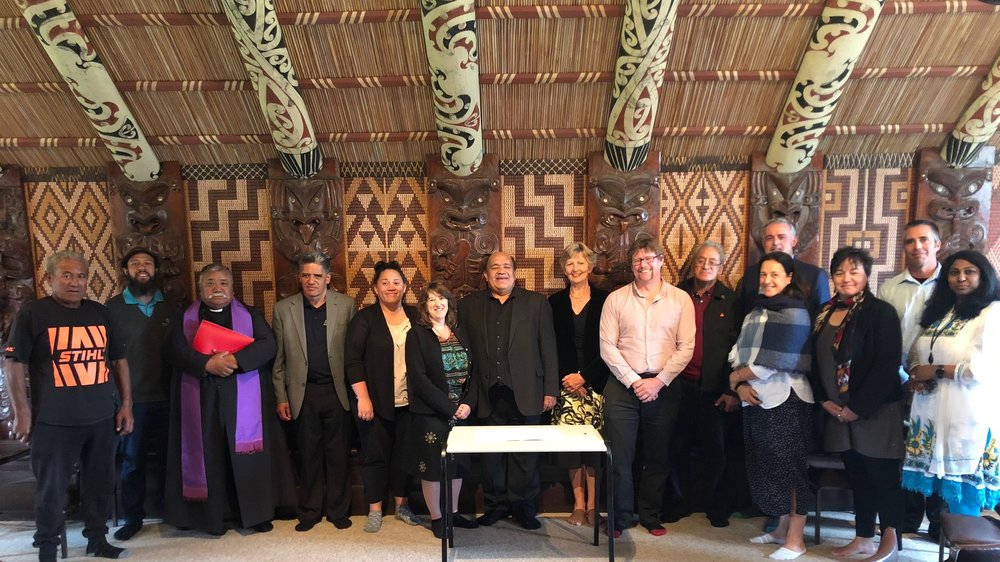
GROW COLLABORATIVE LOCAL LEADERSHIP
The population of Uawa is just 900, and with seven marae there were plenty of people willing to step into a leadership role within the initiatives that the Trust runs. However, Shanan explains that while someone does need to take charge, everyone is encouraged to have a voice.
“We have certain people who lead projects but the idea is that there is no hierarchy.”
Representation of each of Uawa’s marae is important, however they work together for collaborative groups such as the Uawa Sports Club, Golf Club, Bowling Club and the Surf Lifesaving Club. Representatives of each marae meet on a monthly basis to talk about each club, each marae and the wider organisation’s aspirations. Information is then fed into the Community Plan by Shanan who also acts as a representative for the entire Te Aitanga a Hauiti Trust.
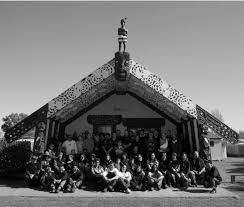
GROW FROM SHARED LOCAL VISIONS
The Trust worked to develop programmes that suited various ages, and that all served more than one purpose: skills development and connection to te whenua.
As well as a focus on the two local primary schools being identified places to foster interest from a young age, Te Aitanga a Hauiti facilitated a community survey which collected more than 90 responses. These responses helped the Trust to make decisions on what programmes and initiatives would be helpful in their place. Interestingly, safety was a main contender, and therefore the following additional programmes were created:
- Water safety: skills in and around the water and with waka ama
- Youth leadership: giving rangatahi a taste of what life might be like after they leave school
- Kapa haka: a connection to Uawa’s waiata and surrounding iwi, as well as development in singing and performing
- Ti ahi ka (our story, our voice, our place): to keep the home fires burning, creating connection and empowerment. This has included unveiling a Pō in the main street of Uawa, writing an e-Book about the discovery of human remains on the Pa in one of the school’s grounds, and a dancing competition called Dancing with the Pa because there are so many keen dancers in Uawa
“The main goal with this is that we’re always looking ahead and forward to new ideas and ways to connect with our mana.”
WORK WITH DIVERSE PEOPLE AND SECTORS
“One of our most important community-led development projects has been the Uawa Nui Sustainability Project, which is something that’s not going to really have an end date because it’s about looking after the assets we have.”
With the collaboration and advice of environmental scientists, a plan has been developed to restore the Uawa river catchment, an area which was gravely affected by damaging floods in 2018.
Seeking advice from experts in their fields gave Uawa a chance to make plans around what was best for their place.
“There is always room for another voice at our table.”
Despite a positive response from the community to develop CLD programmes, this mahi has not come without its challenges. Because of Uawa’s commitment to its tangata whenua, they wanted to make sure that every one of their wider community members had been consulted; that it was an inclusive approach and that no one was being missed out.
“We stretched ourselves in the community to engage, meet and discuss this process with community groups. This required a significant amount of time and patience which felt difficult at times because we didn’t think we were progressing things fast enough.”
But, as Shanan says, collaboration and consultation is so important. “There are so many people in our community who are representatives on different boards and groups. It’s about working strategically and encouraging those who are also working with our leadership group to always think about how we can make this more of a CLD approach. My advice would be to take your time with planning and ensure you haven’t missed anyone out. We asked ourselves ‘who else?’ a lot.”
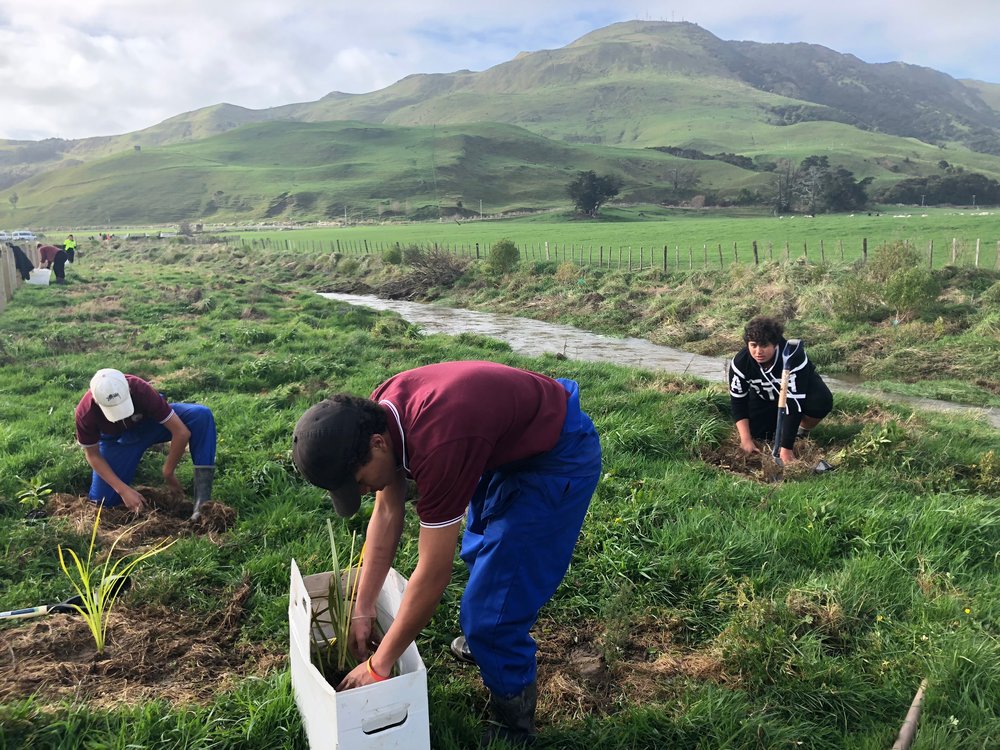
“The purpose of our sustainability projects is to achieve long term economic and social benefits and we wanted to learn about the best ways to do that. Now that we have a plan we’re teaching it to our children in school so that they can understand the importance of looking after our land and our river.”
And this really is the essence of Uawa. What drives them to encourage their people to flourish is all about developing a sense of self, be connected to their surroundings, and to instinctively pass their knowledge and mana onto future generations.”
“Relationships with whanau, iwi and hapu are key. Allow the opportunities to arise with your community. Empower their voices! Validating and acknowledging their opinions is our way of insuring our community’s future.”
“We have a succession plan for our young people to pass it on. We want to inspire our people to stay connected to our land and to look after it.”
To learn more about what Te Aitanga a Hauiti Centre of Excellence do, visit their website.
AgeConnect: looking out for our older generations
“This is not just about nice fluffy stuff, this is about health and wellbeing.”
Caroline Budge, Manager of Age Concern Nelson Tasman, is passionate about giving a voice to the growing older population of New Zealand.
Based in Nelson, she heads up the region’s branch of the nationwide organisation.
“Nelson is up there in terms of its ageing population. Its climate and quieter pace attracts people for retirement.”
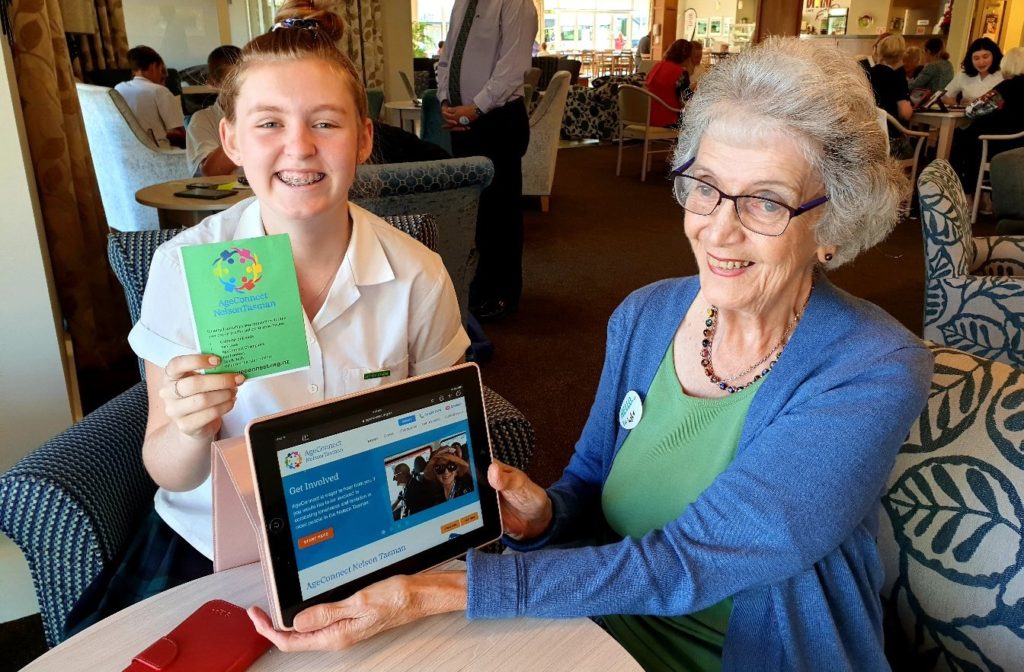
According to international, as well as national, research social isolation and loneliness has a huge impact on physical and mental wellbeing. ““There’s research to suggest that chronic loneliness is akin to smoking 15 cigarettes per day. Think of the impact that’s having on people’s wellbeing and on our health system. Ultimately the goal is to keep more older people away from the doctors and hospital because we can do something about it.”
Caroline and her team are doing exactly that.
“It started with companionship. We offer a visiting service using volunteers to go to people’s homes. Mostly they are people in their 80s and 90s who are stuck at home. But a couple of years ago we started thinking about those who feel disconnected in some way but who aren’t maybe old, or who want to be connected and out and about in the community.”
Caroline explains that loneliness isn’t something that happens just for older people – it can happen at any age. However the options for younger people to seek help and integrate into their communities are much more accessible.
WORK WITH DIVERSE PEOPLE & SECTORS
“So we ran a test. We asked our community what they thought, and we had a huge response.”
Reaching out to local health professionals, councillors, community leaders and business owners, Caroline and her team were hoping to get a wide range of interest and input into what Age Concern Nelson Tasman could do next.
So huge was the response to the first invite-only meeting, with a turnout of 60 people, that they hosted a second meeting – this time opening it up to the wider community. That meeting attracted 100 interested people of varying ages and occupations.
GROW FROM SHARED LOCAL VISIONS
“From there we figured out who was really interested in getting involved, identified our top issues to address, came up with themes, and set up working groups. Then we realised it was enough work to create a new job. We funded and then recruited a position to help support collaboration and make things happen. Therefore AgeConnect Nelson Tasman was born. At the time we had no idea what this person was going to do but knew that it was about working with others to tackle social isolation and loneliness and that some exciting innovations would occur.”
LEARN BY DOING
With people on board and ideas in hand, the team’s priority was to put things into action. One of the first initiatives to get off the ground was Tea & Tech – a regular learning session between residents of a local retirement village and teenagers from the Nelson Youth Council. The idea was to help older people on a 1:1 basis with their digital devices – smartphones, tablets and PCs. They could ask practical questions that would be answered by knowledgeable teenagers, who would in turn get to practise their training and explanation skills.
“When instructions say ‘just go to our website’ it becomes a huge barrier for anyone who doesn’t know how to use a website. We hoped it would be practical learning for everyone involved but what we found was that connections were made and bonds were formed. The teenagers showed real leadership and commitment, and older residents got much more than digital skills out of it too. Often what the older people want is something really simple – they might not really know what wi-fi is, for example, or how to share photos. The results are quite magical.”
BUILD FROM STRENGTHS
Two years on, AgeConnect is busier than ever – facilitating new initiatives and encouraging the community to take on ‘doing the doing’. Tea & Tech has now been taken up by three local high schools, two other retirement villages, with plans to run them in the community as well.
Pet Connect is another initiative that has been very successful.
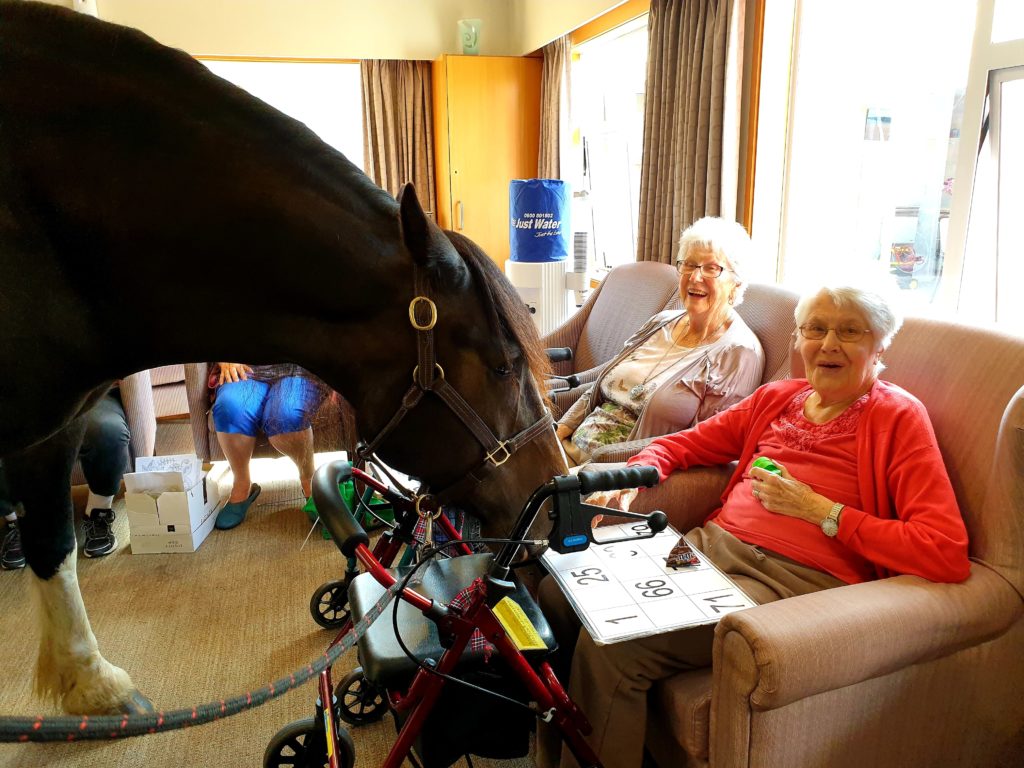
Mostly it’s dogs that their volunteers take in to visit the residents, but there has been a surprise superstar. “Tyson the Clydesdale horse, whose owner is a local woman who’s happy to volunteer her time, seems to be able to sense something in people. He’s huge, but he walks down the corridor of the rest homes. It’s amazing. He gently nuzzles people and seems to know who needs the most attention.”
For some residents of care homes who’ve spent their lives on a farm, and are now living in the city with next to no animal contact, Caroline explains how this initiative has brought incredible joy to those who’ve missed the smell and presence of animals in their lives.
“It’s moved people to tears. It’s just a short few moments that they get with Tyson but the joy it brings to some residents is medicine itself.”
Something else that was able to be put into action quickly was the connection between the need for community transport for older people, and the number of existing vans and volunteers who were available to help. This has been a quick win-win for all involved.
GROW COLLABORATIVE LOCAL LEADERSHIP
Caroline says it’s been incredibly encouraging to see the way in which the wider community has embraced these and other initiatives.
“The idea behind what we’re doing is to get initiatives off the ground and help facilitate them, then we work with the community to take charge and run with them.”
As well as focusing on specific initiatives such as Pet Connect and Tea & Tech, AgeConnect also developed what they call AgeConnect Champions – anyone in the community, whether an individual, group or business – who are doing their bit for older people.
“This might be a sticker on the window to let people know they’re age friendly, or a chair to sit down on while they wait somewhere. Things that aren’t mainstream, but that make all the difference to someone’s day when they’ve made the effort to venture into town.”
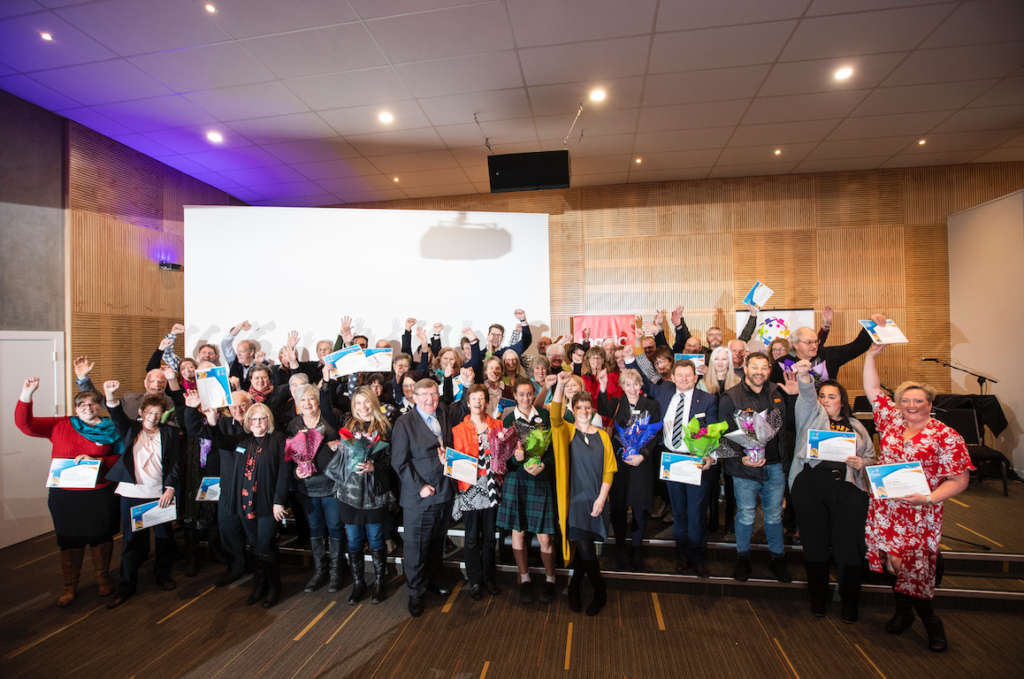
They have also established an annual awards ceremony for nominated Champions, recognising things such as being physically accessible, offer great customer service, or promoting intergenerational activities. Just recently they recognised 150 Champions at their Awards, sharing stories of kindness and examples of great community work.
By encouraging local businesses to get on board and be recognised for their efforts, Caroline says it has begun to instil an expectation that local businesses should be prepared to do what they can for the region’s ageing population.
Not only to encourage inclusivity among the retail and service industry, but to ultimately have a positive impact on someone’s life.
AgeConnect is a concept that is now being picked up by other communities and Age Concern branches which, given New Zealand is home to many communities that are similar to Nelson, is a brilliant example of community-led development in action.
Mataura: a community transformed
Jo Brand, former Community Development Worker, says Mataura was “limping along and disconnected”. This was partly due to the shut-down of various industries over the years, resulting in people moving away to find work and to access a better range of facilities. A lot of property was owned by absentee owners and wasn’t looked after well. Jo adds says that “all the numbers were terrible”, according to a 2008 study done by Public Health South (Southern District Health Board). Mataura also had the lowest decile school in Southland, only one out of five kids were school ready at age 5 and the crime statistics were less than ideal.
Shared local visions drive action and change
Government agencies were concerned about Mataura and were going to meet to decide what to do, but then they realised that the locals were already creating a way forward. The town had already formed a taskforce and started working with Inspiring Communities.
Alan Taylor, Chair of the Community Board, stresses that “there is always a need for a common vision”. So, the process started with a community consultation workshop. Everyone got together to talk about what they wanted in Mataura. “We started with celebrating and identifying who Mataura is first. That we’re not buying into what everyone else was telling us we were or weren’t” says Jo.
The residents created lists of what they wanted to see in the town and 70% of the projects on those lists have now been completed, even ones Jo never thought would succeed. Having more than one cafe in a town of 1,500 people didn’t seem realistic, but they now have two independent cafes as well as a Four Square and a fish and chip shop.
Using existing strengths and assets
Jo believes “the skillset was always there from the people. It just needed encouragement”. Many of the town’s projects have been ones of restoration. The Mataura Museum was a struggling entity until a group of volunteers worked with Gore District Council to restore the building. They made it interactive and modern, relevant and local. On opening, in 2015, it won Best Museum Project Award at the NZ Museum Awards and one of the volunteers travelled to a Heritage conference in Croatia to speak about the project.
The old town hall was restored and there is also a newer community centre, which is a real focal point for the community.
Eleanor Ranstead, the current Community Development Coordinator, has witnessed the extraordinary transformation of the town in her 20 or so years in the area: “It has a lot of hope”. She says the focus is now on building the capacity of community groups and people. The list of programmes, activities and resources the town now offers is extensive: a Mens’ Shed, Strengthening Families, community lunches, Toddler Time, the Bunker Youth Centre, Mind Matters, an Al-Anon group and a suicide prevention group, activities at four different churches and so much more.
“What’s really emerged is not so much leaders. It’s that people have embraced other people’s strengths. People recognise and understand that you don’t have to be the expert at everything. But everybody has an expertise in something. That’s what we do differently now” says Jo.
Many people, groups and sectors working together
Mataura was awarded a Community Development Scheme grant by the Department of Internal Affairs. The community has also worked with Inspiring Communities on a regular basis and has brought Jim Diers to town to do workshops on several occasions. Gore District Council has been another important partner in the town’s development.
Working collaboratively is something that the town’s people have got better at over time. “Now we say ‘Here’s what we want to do. Who do we need to help us get that?’” says Jo. “To encourage involvement from the community is huge. And working with local government is important” adds Alan.
Working adaptively, learning informs planning and action
There has been a lot of learning along the way. “It was a journey of understanding what people needed” Jo says. “The community gardens didn’t work at first. They realised they had to charge money because no-one would come if it was free”.
Barbara Cunningham is responsible for the community gardens. The project expanded further when she realised that the Meals on Wheels programme was using frozen meals from Gore. She took over the contract and started delivering fresh food, using produce from the garden. The service now runs five days a week.
Other projects include demolishing derelict buildings and putting in parks and recreation areas, building a sensory garden and an outdoor gym circuit and creating a new childcare centre which fits the needs of the local parents, many of whom do shift work. The primary school roll is up by about 30 and they’ve just established a bilingual class.
Mataura Marae sat incomplete for about 30 years, after a number of setbacks prevented renovations taking place. Work finally restarted in 2017. The wharenui is now finished and the plan is to have gardens and possibly a café, with wheelchair accessibility and a family friendly atmosphere.
These projects are not only important to Mataura. Gore District Council wants to retain Mataura as a destination point, so Southlanders (and others) stop and visit.
The population is on the rise and house prices are increasing, but are still affordable, which makes it a very attractive location. And business is booming! Eleanor estimates that there are now 80 – 100 businesses operating in the town. The townspeople think local before buying further afield and some businesses that might have closed down have been bought and run by other locals.
Jo captures Mataura’s community spirit well when she says “I remember my Great Grandmother telling us ‘just do what you can to help others: it doesn’t matter if it seems small to you’. I think that sort of sums up why Mataura is what it is”.
My Inspiring Community: Randwick Park
With a shared local vision to drive and create change, the people of Manurewa (Community of the Year 2017) utilised their existing strengths to better understand what their young people needed in order to feel connected – working together across the sector and community groups and whanau to deliver to their shared vision for the outcome.
Community-Led Development Principles
Using existing strengths and assets
Shared local visions drive action and change
Learning by doing
Visit their website to learn more here: Randwick Park: Manu Tukutuku
A positive Christchurch community story
Riccarton West used to be a place where “people didn’t meet people… there wasn’t a sense of belonging”, according to one local. After a series of community-led projects in the area, crime stats are down, residents are more connected and people are caring for the environment and the community. Take a look at their awesome video below and if you’d like more information about this initiative, check out Oak Development Trust’s website. Riccarton West Community Documentary from Dan Watson on Vimeo. It’s also been reposted on our YouTube channel here.
Connecting communities one repair at a time
Nowadays the need for a circular economy is a statement that’s hot on everyone’s lips. A perfect example of an initiative that meets this need is the Repair Café movement. Repair Cafés seem to be popping up everywhere! In fact, there are over 1,500 Repair Cafés worldwide. The first one was in The Netherlands in 2009 and now they are happening in Aotearoa too: in Christchurch, Kapiti Coast, Te Puke, Auckland…
So what is a Repair Café? It’s a pop-up event where people can bring items to be repaired instead of throwing them away. The event is run by volunteers who have repair skills to teach or to share. Depending on the expertise of the volunteers, repairs can be made to machinery, bikes, clothing, toys, furniture, electrical appliances and more. The purpose of these events is two-fold: to try to change our “throwaway culture” and to bring people in the community together. An added bonus is that it saves people money: if their item can be repaired they don’t need to replace it or pay for more expensive repairs elsewhere. If the item can’t be repaired, then the event organisers dispose of the item. It’s a win-win!
Work with diverse people and sectors
Steve McLuckie is the coordinator for Shore to Thrive, a strengths-based, community-led partnership project between Auckland North Community and Development (ANCAD) and the Takapuna Methodist Church. Steve explains that Shore to Thrive “is all about bringing people together, fermenting locally led change and positive outcomes in partnership with local people. It is about supporting community connections and strengthening relationships to enhance the wellbeing of families and children in North Shore Communities”.
Shore to Thrive partnered with Global Action Plan Oceania and the Devonport Community Recycling Centre team to organise their first Repair Café event in 2016 in Bayswater. Steve says that they thought this local opportunity would fit their strengths-based and community-led kaupapa. They had heard about similar events being held overseas and the first one in Aotearoa had taken place in Pt Chevalier (Auckland) earlier that year. Steve explains that they decided to run a Repair Café because they bring people together to share skills, save money and reduce the amount of waste going to landfill. And, of course, there’s always food! “It’s a beautiful idea that ticks a whole lot of different boxes”.
This first event provided the catalyst for a successful, collaborative application to Auckland Council’s Waste Minimisation and Innovation Fund that has allowed the partnership to grow the Repair Café movement across Auckland. In 18 months, they supported 18 events and saved people around $60,000 on replacement costs!
Build from strengths
The key to the success of a Repair Café event is finding skilled and passionate volunteers. The volunteers not only need to have repair skills, but they need to buy-in to the idea and be able to engage with the community. The team managed to recruit local volunteer experts in a variety of areas: electrical appliance repair, clothes repair, woodwork, bike repair and more. All of them were engaged and excited to be participating. Often these events can see people come out of the woodwork and use skills that had been lying dormant. Volunteers can not only help the community by using their skills, they can also teach these skills to others.
Learn by doing
Glenys Chapman, who started volunteering at some of the events by doing mending, says she participates because she enjoys “being able to recycle things, talk to people, the community feel, the shared food: the whole idea gels with me”. Mostly she repairs, rather than teaching repair, but “sometimes people learn how to sew on a button, for example. I try to talk about what I’m doing so that the person might learn the skill themselves, but not everyone has a sewing machine”.
Tasha Wehrle, who attended an event and then decided to volunteer at Repair Cafés, says “for the people who attend the benefits are huge, as it saves people time, money and having to drive out of the area to get something fixed. It brings people together, they connect and it strengthens knowledge, friendship and community spirit. The same benefits apply for volunteers but with the added bonus of feeling useful and using their skills”.
What’s next?
Soon after we did this interview, the Repair Auckland partnership won an Auckland Community Zero Waste Award in the following category POWER OF THE PEOPLE – For a group, community organisation (not for profit) or school that has demonstrated commitment, effort and leadership. There are already nine Repair Café events scheduled for 2019, with the prospect of many more. These include the first of the year at Browns Bay on the 17th of February.
If you’d like to learn more about how to run an event in your area, check out the Repair Café Auckland website, where you can find an event “how to” guide. They can also support you to plan and host a local Repair Café at your community facility or attend one at another site. And if you’re in the Auckland area, you can hire a trailer full of tools for your event!
Here’s a look at the 2017 Bayswater event in an excerpt from the film Living the Change.
And here’s another Repair Café event at the Gribblehurst Hub in Auckland.
Grey Lynn 2030’s transformation over the last decade
Like Inspiring Communities, Grey Lynn 2030 is celebrating its 10 year anniversary this year (2018)! We spoke to Brigitte Sistig and Colinda Rowe about how the organisation started, what it focuses on and where it’s headed.
Grow from shared local visions
Grey Lynn 2030 started out as a couple of locals talking about what they could do to support a healthy local environment and community. At a public meeting in 2008, the Grey Lynn community created a vision of how their neighbourhood could look if it was more self-sustaining, relied less on fossil fuels and imported goods, and created less pollution.
The community wanted a local market, greater biodiversity, safer streets, community gardens, local waterway restoration and to know their neighbours. So they drew up a plan and Grey Lynn 2030 was born!
Grey Lynn 2030 (GL2030) is part of the Transition Towns movement, which is about communities coming together to address big challenges by starting local. The movement has a major environmental focus, and this is evident in everything GL2030 does.
Brigitte Sistig, the Chair, explains that being a Transition Town means that “any initiatives and solutions come from the community”. To achieve the community’s vision, they set up several focus groups around waste, energy, urban environment and more. Out of these groups have come many interesting and popular initiatives. In 2009, the first major project was an E-waste Action day. Over 12 tonnes of computer equipment was collected and diverted from landfill.
Also in 2009, a Farmer’s Market was established and has steadily grown in popularity over the last decade. The market has a strong commitment to becoming zero waste. Workshops are frequently offered during market hours, which provide an opportunity for GL2030 to share ways of getting involved at a local level. GL2030 also launched a website and a monthly newsletter to further spread the word.
Other projects in which local people have become involved include community gardens, fruit tree planting, traffic calming, berm bombs, the community choir, Repair Cafés, car boot markets and starting up a Business Association in 2010.
Brigitte finds it rewarding to see things changing in the community. “To see the community coming together at the Farmer’s Market every Sunday morning is inspiring. People can learn where their food comes from and connect with friends. It’s a real community place”.
Colinda Rowe, who moved into the area in 2009, became involved with GL2030 as she wanted to “get connected” to the neighbourhood. She became a Trustee in 2012, was Chair for four years and is now the Treasurer. “I’ve met some wonderful like-minded people who are now good friends and I love being able to go to local places such as the Farmers Market to catch up with them – it makes me feel like I live in a village within a city”.
Work with diverse people and sectors
GL2030 is a great example of using collaboration to help achieve your vision. “Often, with grassroots initiatives, when people have a good idea they are ready for action, but sometimes there can be a time delay, due to the processes Council needs to go through” says Brigitte. “In this situation, it’s important to keep the vision, the interest and the group’s energy going.”
In 2015, GL2030 worked with the Earth Action Trust to secure funding from Auckland Council’s Waste Minimisation and Innovation Fund to set up a one-year trial Resource Recovery Centre, which opened in 2017. During that year, the RePurpose Community Recycling Centre diverted 10.8 tonnes of waste from landfill.
GL2030 holds Green Screens film nights which involve inviting a local speaker along, watching an environmentally-themed movie and discussing it afterwards. Brigitte has found that these sessions are “a real catalyst for action”.
The Grey Lynn Business Association has brought together diverse enterprises from all over the neighbourhood, including ethical businesses and people who work from home. “Sustainability has been emphasised from the very beginning in the Grey Lynn Business Association” adds Brigitte.
Earlier this year, GL2030 held its first Trash to Trade competition showcase, in collaboration with Waitematā Local Board and the Grey Lynn and Kingsland Business Associations. Brigitte explains “Local businesses offered up their business waste, in keeping with sustainable business commitment, supporting emerging up-cycling artisans to create new works. The event attracted fantastic upcycled entries and stimulating conversation between artistic makers and experienced business managers. Listening to the stories of the makers was a highlight of the event.” This project has strong support and will continue next year.
Learn by doing
“It’s a continuous learning process” says Colinda. Grey Lynn 2030 “has enabled people in our community to action their ideas by providing a place of incubation and support for initiatives as well as a legal structure to allow for funding to be requested for these projects” she explains.
So what does the future hold?
GL2030 has plans to revive and reconnect some of the groups that have gone in different directions. Specifically, they want to focus on finding local solutions to the energy crisis and are aiming to continue with local food production with their Food Forest project. There are also plans for a more permanent Resource Recovery Centre in Western Springs and more local upcycling initiatives.
There aren’t as many Transition Towns now, but Brigitte thinks there could be a revival on the horizon. “People are noticing that climate change is real. I have a sense that there’s a new movement and more people will want to become involved. People are realising that it actually takes personal change as well”.
Colinda says this is just what they need. People power! She talks about how vitally important it is to have a good volunteer base. She strongly recommends that other communities start Transition Towns in their area because “meeting new people and growing new friendships whilst doing something positive for your neighbourhood and our planet is extremely rewarding”.
______
Grey Lynn 2030 has published a book about their journey over the last decade. You can order a copy here.
To find out more about Grey Lynn 2030, go to their website.
Learn more about their Trash to Trade project by watching the following awesome video.
The Trash to Trade Competition
For more about Transition Towns, see http://www.transitiontowns.org.nz/.
Building sustainable change in Auckland
When community development worker Tara Moala walks away from a project, she has to be confident it will be owned by the community and will remain in the community.
These outcomes are embedded in the way she and her colleagues at Rākau Tautoko support the development and growth of community.
Rākau Tautoko is a small, Auckland-based consulting social enterprise undertaking community-related projects, community research and development advice, facilitation and leadership. It creates supportive opportunities for community practitioners to develop their knowledge and skills, apply their philosophy and exercise appropriate accountabilities.
Grow from shared local visions
Tara’s latest involvement is with the Hub Zero project in Panmure. Funding for this project came from came from the Maungakiekie-Tāmaki Local Board and was originally allocated towards investigating the development of a single social enterprise, but a strong community voice had other ideas.
The result was Hub Zero, which is a centre where many waste-based social enterprises are supported to grow. It helps small businesses to prevent waste from ending up in landfill and to create new, upcycled products for sale.
At Hub Zero you will find:
- permanent and hot desk spaces for small social enterprises to base themselves
- a shop full of upcycled products made by local entrepreneurs
- a space for connection and networking
- office space for Hub Zero partners and friends
- a workshop room that can be hired out for community meetings and waste reduction workshops.
“There were a lot of ideas around creating a platform to do things better, so we shifted our mind-set to allow everyone to flourish” Tara says.
“That end game is what it’s all about,” she explains. “A key question to ask is ‘How will things keep going once we step back?’. If the answer is from outside funding and expertise, then it is not sustainable. It’s not going to work”.
Build from strengths
Using the founding principles from the Tamaki Inclusive Engagement Strategy (TIES), Tara believes the success of community-led development (CLD) lies in the way funders, groups, social services and anyone working with a community listens to what the community is asking for and involves community from the start.
Tara’s top three ways of working are:
- involve community in all the decisions
- ensure every single project can stand alone financially and be sustainable
- make sure the community wants to do it
Tara explains that they use the TIES foundation principles and guidelines in every project, to ensure that the community is valued. “We never hold the project; the community does. We might support it for a bit of time, but it is always returned to the community. When we walk away it remains in the community and is owned by the community.”
Tara acknowledges this is easier said than done. Often funding drives community ambition and outcomes, and there is no clear guideline on how to achieve sustainable and ongoing financial support. Communities are complex and unique so what works for one might not work for another.
“There are proven experiences for what works in Tamaki and these go back to CLD,” Tara says. “How to create community ownership is a skill and one all social services need to work on.”

